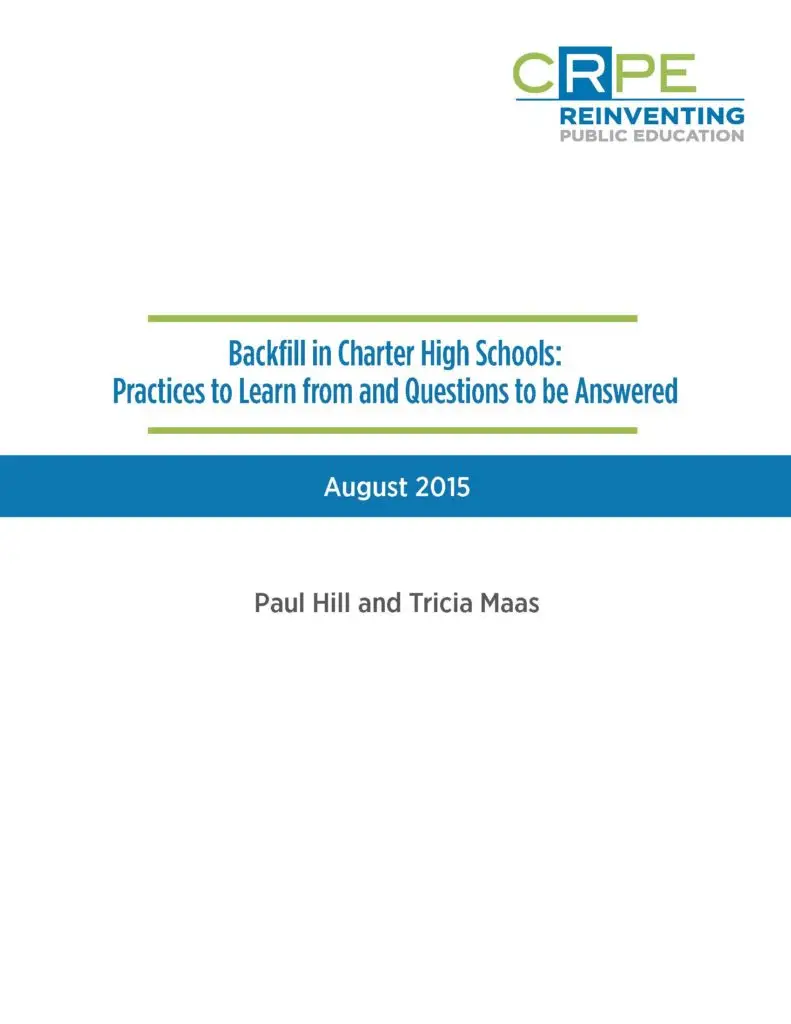Backfill, or whether charter high schools fill open seats after initial enrollment, has become a contentious issue for those in and around the charter sector. Some have criticized urban charter schools that admit few or no transfer students for doing so to protect their high average test scores, while others have defended the restricted acceptance of transfer students as necessary for maintaining coherent educational programs for incumbent at-risk students.
Despite vigorous debate about the issue, little is known about most charter schools’ policies and practices related to accepting and supporting transfer students. This paper takes a preliminary factual look at backfill in charter schools. Drawing from interviews with ten leaders in the charter sector, we outline competing perspectives on backfill, summarize practices that schools use to support transfer students, and identify environmental conditions that facilitate or complicate a school’s ability to serve transfer students from educationally disadvantaged backgrounds. We conclude by pointing out unanswered questions that, if pursued, would help researchers, practitioners, and policymakers understand the magnitude of the problem and the costs and benefits of interventions that can support transfer students.





